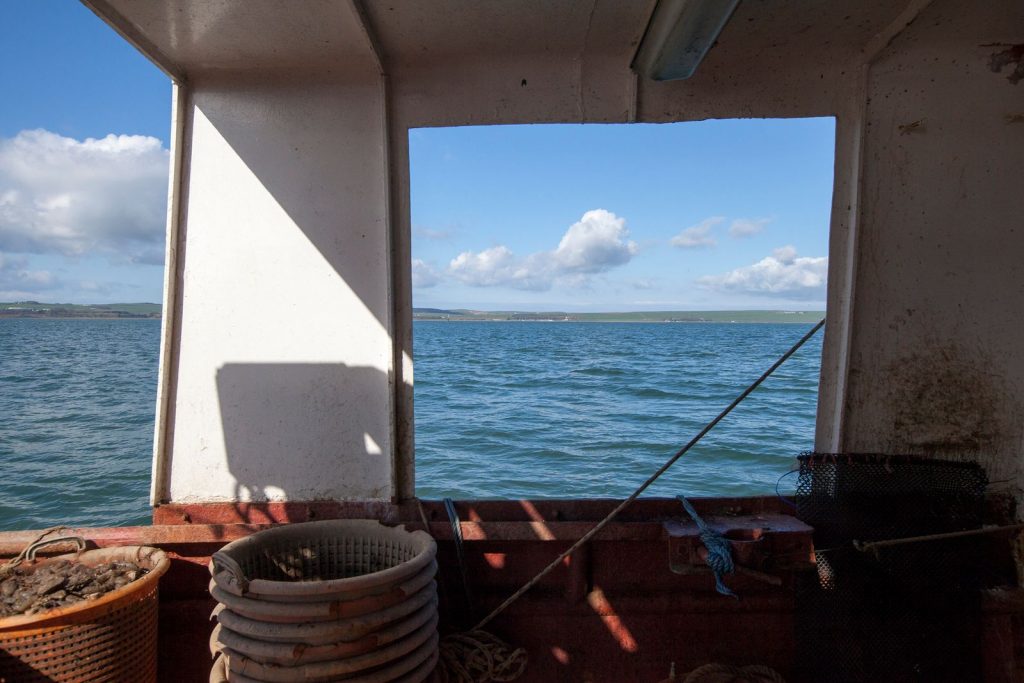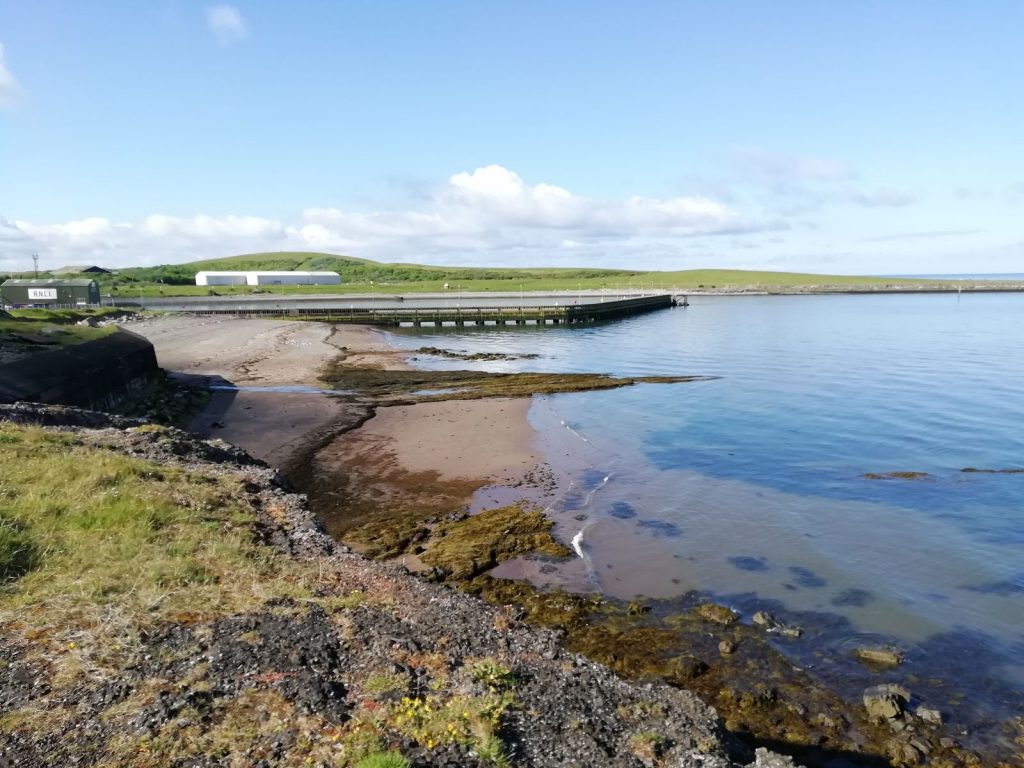Productive economic overview
Scotland
Sea Fisheries
Fishing on the Scottish Solway Firth is dominated by scallop and queen scallop fisheries primarily based in Kirkcudbright, with Dumfries and Galloway accounting for 12% of scallop and 96% of queen scallop landings in Scotland. Smaller amounts of shellfish are also landed, including lobsters, whelks, razor clams and crabs. The overall tonnage of landings has declined by 50% over the last five years, with a particularly large fall of 61% for queen scallops. Despite this fall, catch value has increased over the same period indicating a strong rise in the price of shellfish.
Other fisheries activity on the Scottish Solway coast includes salmon and trout fishing, particularly traditional haaf net fishing. However, the retained catch has fallen by 91% over the last ten years, and this is now a heritage and recreational activity rather than a viable commercial fishery. Cockle fishing on the Scottish Solway sands has been closed since 2011 due to sustainability concerns. Various studies have been conducted since then, but none have concluded that the cockle beds are yet ready for commercial harvesting.
Marine Aquaculture
There is little marine aquaculture along the Scottish Solway Coast, with a total of ten people employed in the industry in 2018. The most notable aquaculture site in the region is the Loch Ryan Oyster Fishery which produces high quality native oysters and provides the produce for the Stranraer Oyster Festival.
Seafood Processing
Seafood Processing is a key sector in the Dumfries & Galloway economy, currently employing around 400 people across the region. The main area of activity is in Annan which is home to Young’s seafood scampi processing plant, and the recently closed Pinney’s of Scotland smoked salmon processor. Pinney’s was by far the largest fish processing employer in the region, and around 450 jobs were lost after its closure in 2018. However, the site has recently been purchased and is estimated to create around 100 jobs when it reopens.
The other main location for activity is in Kirkcudbright, where West Coast Sea Products is based and is a processor for scallops which are landed at Kirkcudbright by its own fishing fleet.
Shipping and Transport
There is a long history of short sea shipping in the Scottish Solway Marine region. Today, the primary shipping activity in the region relates to the two Irish Sea ferry services operating from Loch Ryan. A Stena Line service runs to Belfast and a P&O service to Larne. Until 2011, Stena Line sailed from Stranraer, with the switch to Cairnryan offering a shorter route. Sailings take around two hours.
Upwards of 1.5 million passenger journeys are made between the two operators each year, with a large volume of freight also carried by trailer. With a similar freight tonnage carried in each direction, it indicates the importance of the link to the economies of both Northern Ireland and Scotland and, through onward travel, the Republic of Ireland and England.
Energy, Aggregates, Subsea Cables and Pipelines
There is limited energy activity in the Scottish Solway with the most notable being the RWE Robin Rigg Wind Farm, with a total of 60 wind turbines constructed, 58 remaining in situ and currently operational, and an installed generating capacity of 180MW. The operations and maintenance base for Robin Rigg Wind Farm are based in England, located at the Port of Workington, with the grid connection slightly further north near Seaton. There is therefore no direct economic activity associated with Robin Rigg Wind Farm in Dumfries & Galloway.
There are currently no proposals to undertake further wind power or fossil fuels exploration on the Scottish Solway Firth, however, there are some proposals for tidal power generation but these are still at very early stages of development and still require all necessary consents. It is worth noting that an area of the Scottish Solway has also been outlined in the Draft sectoral marine plan for offshore wind energy 2019 as suitable for future commercial wind farm development (Draft Plan Option SW1).
Sport, Recreation and Tourism
The environment of the Solway Firth supports a range of marine and coastal recreational activities. This includes sailing, with facilities in Stranraer, Kippford and Kirkcudbright, and plans for further development of Loch Ryan as a destination for watersports. There are a number of designated wildlife reserves, managed by organisations including the Royal Society for the Protection of Birds, Wildfowl and Wetlands Trust, and Scottish Wildlife Trust, with varied visitor facilities. The coastline also offers popular beaches and bathing waters, with walking routes along much of the shore. The Solway Firth is also one of the best sea angling locations in the UK. Growing tourism is seen as important in supporting economic growth in Dumfries & Galloway, with marine and coastal tourism identified as one of the region’s key draws for visitors.
Defence
There is a limited level of defence activity and employment related to the Scottish Solway coast. The main sites are Ministry of Defence West Freugh weapons test and evaluation range on Luce Bay, and the Kirkcudbright Training Area.
Historic Environment and Cultural Heritage
The Solway Firth region has a rich maritime history, in a large part linked to its position as a gateway between Scotland, England, the Isle of Man, and Ireland. The historical and cultural assets in the region make a notable contribution to its visitor and tourism offer – the Galloway coastline is dotted with sites of historical significance, including castles, churches, and other sites such as standing stones and cairns. There are also a number of museums, heritage attractions and trails, including the Mull of Galloway Lighthouse visitor centre and the Solway Military Trail.
Marine Management and Education
Maritime management includes the statutory bodies that have responsibility for the management, operation, and conservation of Scotland’s seas and coastlines for leisure, commercial and other uses. This includes Marine Scotland and the Scottish Environment Protection Agency. At the regional level, Solway Firth Partnership plays a pivotal role in furthering the integrated and sustainable management of the Solway’s environmental, economic and community resources. The Partnership works on both sides of the border, although there are separate marine planning regimes for Scotland and England (albeit sharing common aims).
Education includes research and training related to the coast and marine environment and economy. Provision within the Solway region is fairly limited, although the Crichton Campus of the University of Glasgow in Dumfries offers a range of courses on tourism and the environment.
Image; Oyster Fishing. © Solway Firth Partnership. Photographer; Colin Tennant





